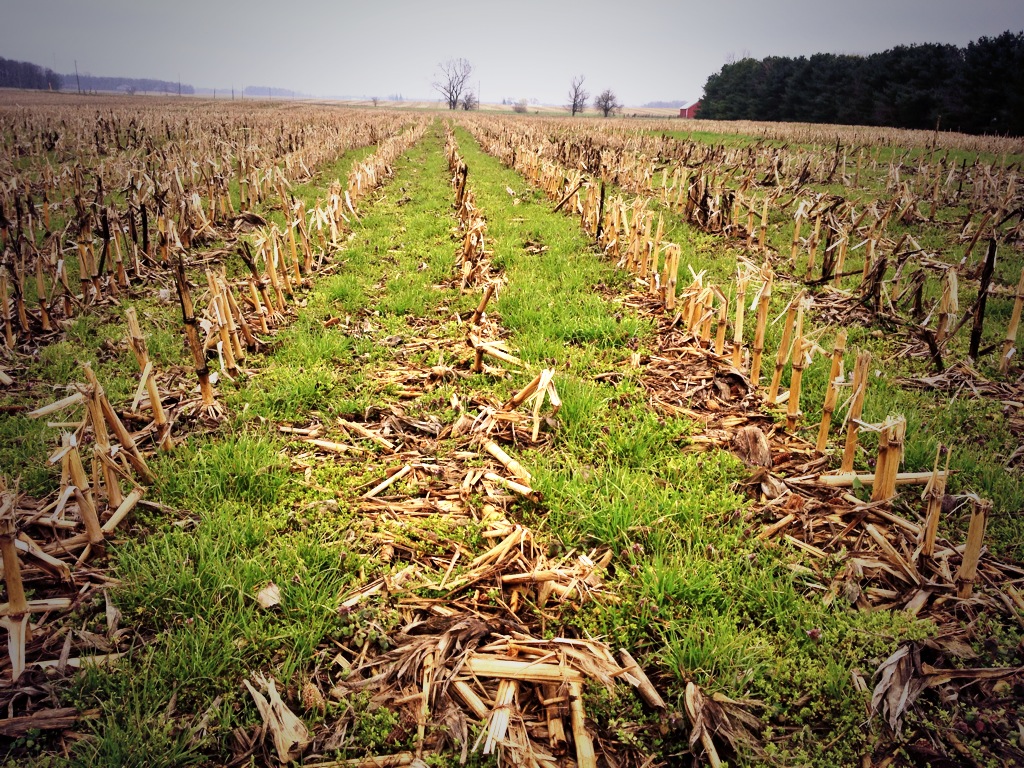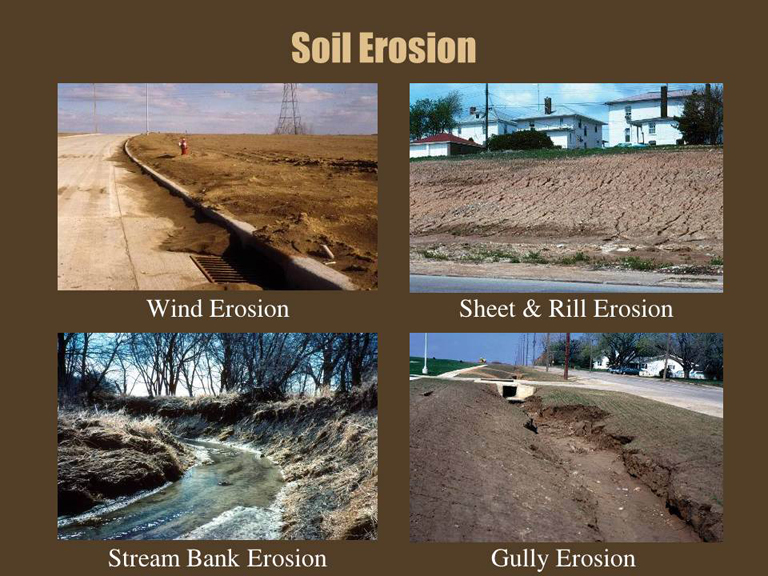Cover Crops
Cover Crops – Keeping Soil in Place While Providing Other Benefits
The harvest of low residue row crops, such as corn silage or soybeans, usually means the soil surface of a field will be left bare until the next crop is planted and a new plant canopy is established. In the Midwest, the next planting may be several months away. That’s a long time for the bare soil to be subjected to erosion caused by rainfall, snowmelt, or wind. For that reason, cover crops are usually established and grown in the fall months, and remain during the winter. In the spring they are then killed and left on the surface as residue for conservation tillage or are incorporated into the soil.
Properly planned and executed, cover crops will protect farmland during this vulnerable period. Plan your cover crop species and management based on your objective(s): soil erosion, water quality, nutrient management, forage and/or soil quality. Not only is soil erosion greatly reduced, but many other benefits can be derived. However, there are risks too.

Some of the Benefits of Planting Cover Crops
- The protective canopy formed by a cover crop reduces the impact of rain drops on the soil surface thereby decreasing the breakdown of soils aggregates. This greatly reduces soil erosion and runoff, and increases infiltration. Decreased soil loss and runoff translates to reduced transport of valuable nutrients, pesticides, herbicides, and harmful pathogens associated with manure from farmland that degrade the quality of streams, rivers and water bodies and pose a threat to human health.
- A cover crop slows the velocity of runoff from rainfall and snowmelt, reducing soil loss due to sheet and rill erosion.

- Over time, a cover crop regimen will increase soil organic matter, leading to improvements in soil structure, stability, and increased moisture and nutrient holding capacity for plant growth. These properties will reduce runoff through improved infiltration (movement of water through the soil surface) and percolation (movement of water through the soil profile).
- A cover crop will increase soil quality by improving the biological, chemical, and physical soil properties.
- As a “trap crop”, a cover crop will store nutrients from manure, mineralized organic nitrogen or underutilized fertilizer until the following years’ crop can utilize them, reducing nutrient runoff and leaching.
- When a cover crop is managed for its contribution to soil nitrogen, the application of a nitrogen fertilizer for the subsequent crop may be less, thereby lowering costs of production, reduced nitrogen losses to the environment and reducing the use of purchased nitrogen fertilizer that is produced using fossil fuels.
- Cover crops will reduce or mitigate soil compaction. Deep tap roots of some cover crops grown in the fall and spring when compacted layers are relatively soft and can penetrate these layers.
- Cover crops will reduce soil moisture deeper into soil profile by evapotranspiration resulting in better tillage and traffic conditions. Improved soil structure and stability can improve the soil’s capacity to withstand heavy farm equipment, resulting in less subsurface compaction.
- A cover crop provides a natural means of suppressing soil diseases, pests. It can also serve as a mulch or cover to assist in suppressing weed growth.
- A cover crop can provide high-quality material for grazing livestock or haying and can provide food and habitat for wildlife, beneficial insects, and pollinators.
Some of the Risks Involved When Planting Cover Crops
Planting a cover crop does involve some risks and potential drawbacks. Proper planning and management of a cover crop can help minimize or eliminate risks, leading to a successful payback.
- Fields with heavy plant residues or early season cover crop weeds or growth are more susceptible to increases in populations of soil insects such as cut worms, army worms, and slugs. A method of control may be needed prior to planting a new crop. Proper pest scouting and treatment, if needed, can reduce the risk of damage by pests.
- The choice of cover crop should be made with existing weed, disease, nematodes, and other soil problems in mind. Growing the wrong cover crop with inadequate rotations may create problem with diseases. The cover crop may increase the occurrence of a disease in the subsequent crop if it happens to be a host for the organism that causes the disease. For example the use of a brassica cover crop such as a forage turnip may harbor insects and diseases for a brassica crop like broccoli. Some cover crops need to be terminated early to prevent management problems with soil fertility, over mature cereal rye with increased Carbon Nitrogen ratio (C:N) will tie up nitrogen needed for early corn growth.
- The cost of establishing and maintaining a cover crop may outweigh some of the benefits. The added cost of seed, planting, management, disking and incorporating the cover crop, and the possibility of planting delays, may make cover crops unfeasible for some farmers.
Source: NRCS
Resources
Indiana Cover Crop Seeding Windows (USDA NRCS)
Carbon to Nitrogen Ratios in Cropping Systems (USDA NRCS)
Managing Cover Crops Profitably (SARE)
Sustainable Agriculture Research and Education (SARE)
Cover Crop Seeding Table For Micro-Farms and Gardens (Marion Co. SWCD)
 Owen County Soil & Water Conservation District
Owen County Soil & Water Conservation District